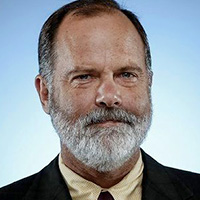WITH THIS EDITION, Blueprint explored how philanthropy and public policy might best co-exist. The featured articles in this issue make clear that they can co-exist — and do.
Ask Eli Broad. As a philanthropist, he has enriched Los Angeles life in myriad ways. He has made some enemies, and some accuse him of distorting priorities — in education, for instance, where his fulsome support of charter schools has helped them advance. Still, whatever opportunities those schools enjoy because of Eli Broad, they must survive in the public marketplace; they need support from parents and students to succeed, not just money or backing from an important billionaire. Meanwhile, millions flock to The Broad museum, enjoy Disney Hall or benefit from medical treatments he has made possible. Those gifts enhance life in this city — and in others, as well.
Then there’s Norman Lear. No one who grew up in the 1970s or ’80s escaped Lear’s influence — his beaming, combative inclusiveness defined the best television of those and future decades. But Lear’s philanthropy has been seminal as well, especially his founding of People for the American Way in 1981. The organization, as important today as ever, is a vital bulwark of constitutional ideals that periodically come under attack.
The work of philanthropists has given rise to the study of the relationship between giving and public priorities. The research highlighted in this issue demonstrates manifestly how philanthropy can supplement and guide policy, rather than threaten or subvert it.
Foster children in Los Angeles receive better care because nimble organizations, including the Pritzker Family Foundation, are able to test ideas in child development and suggest models for the county’s Department of Children and Family Services. The study of gangs and violence — and how best to mitigate both — benefits from the sharp insights of UCLA professors Jorja Leap and Todd Franke, whose decades of work have focused on trauma and violence prevention. Their research merges the interests of the county with the support of the John Randolph Haynes and Dora Haynes Foundation. Professor Meredith Phillips has pioneered still another model: studying educational inequality and responding to it at the same time. Her EdBoost Learning Center tutors young people of all socioeconomic classes, examining the effects of different approaches and delivering them to children —
learning and teaching at once.
These efforts combine the money and flexibility of philanthropy with the service orientation of policymakers, and they fuse those priorities into programs that help people who need assistance the most.
Less noted, but also important, is what this says about the broader relationship between policy and research. There is a tendency among researchers to view the political system with skepticism; from the perspective of the academy, political players can seem compromised, driven by money and the quest for re-election or advancement. On the political side, academics can seem woefully naive. In the Los Angeles City Council or the California State Assembly, to call an idea “academic” is not a compliment.
And yet, the fusion — academic research backed by philanthropic support in pursuit of public policy priorities — is delivering some of the most promising programs for those in need. That’s worth noting. And emulating.
























